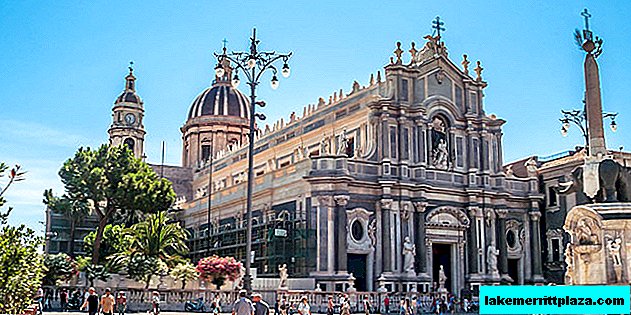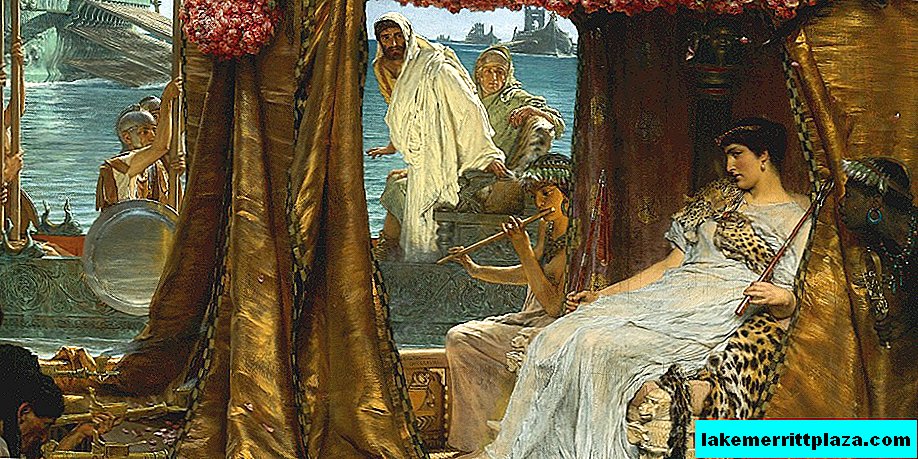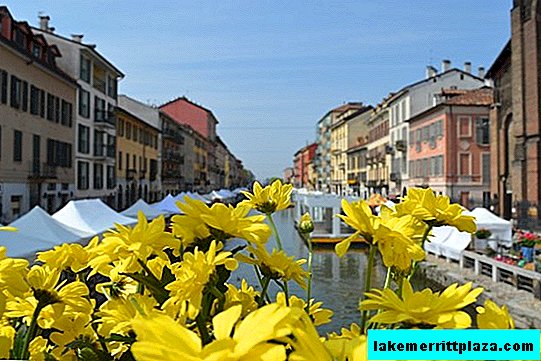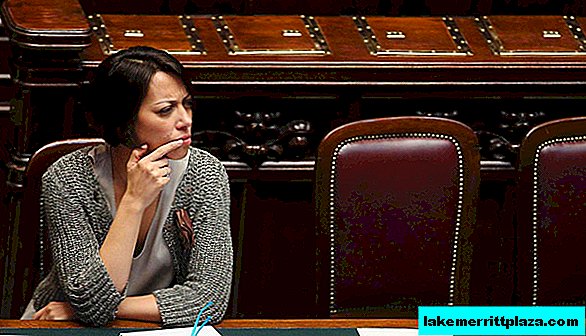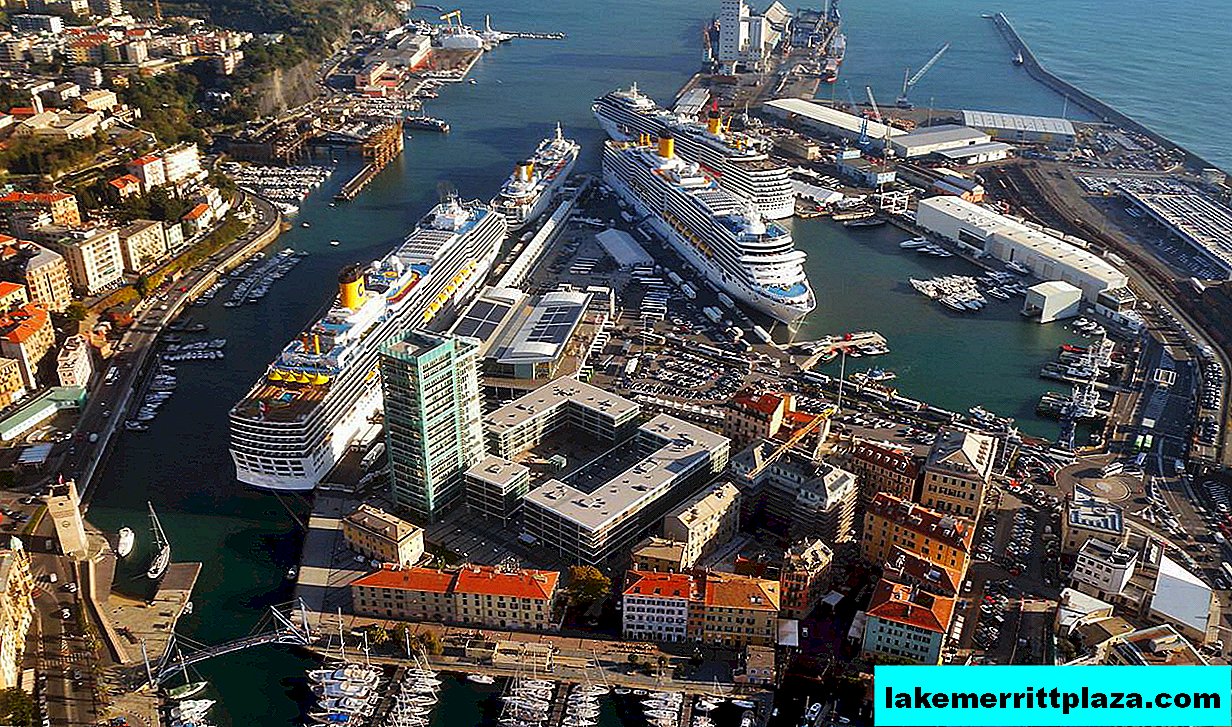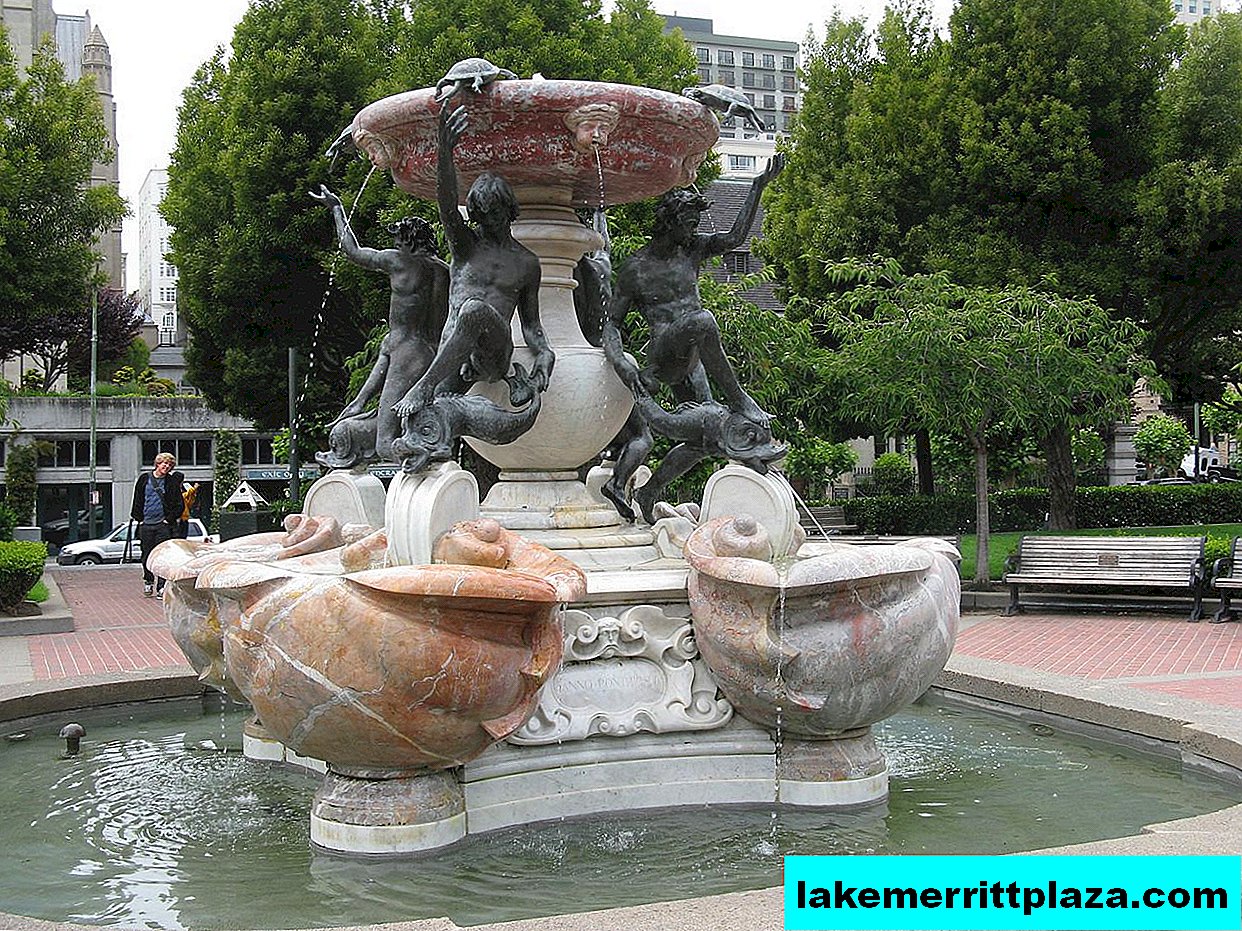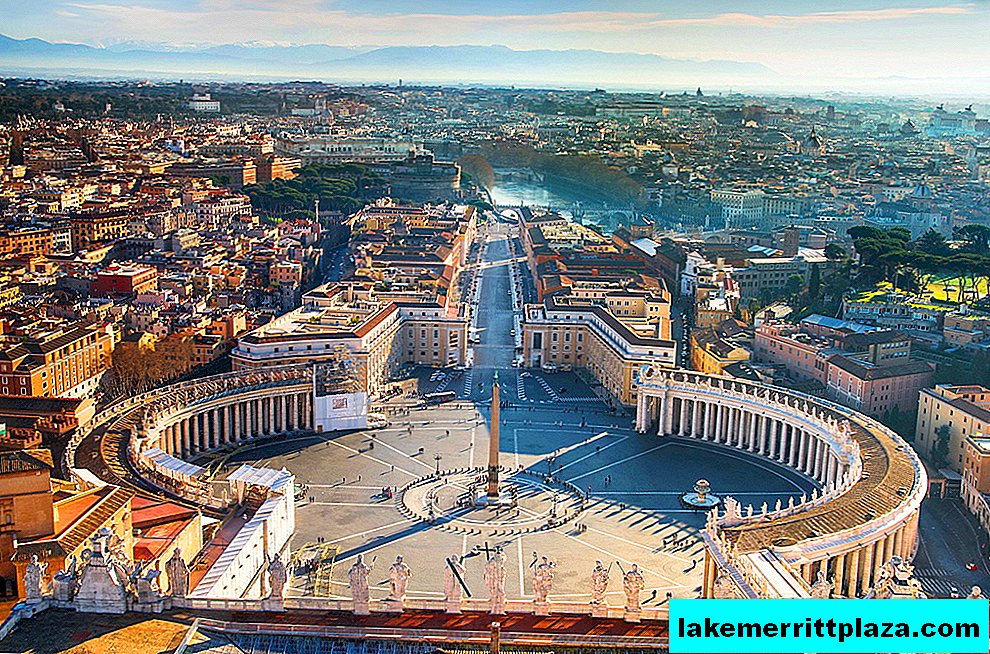Ferrara is a city in the region of Emilia-Romagna, which to this day has preserved the spirit of the Renaissance. Ferrara owes many of its sights to the ducal family of Este, ruling here in the XIII-XVI centuries. It was the duke Ercole d'Este at the turn of the Middle Ages and the Renaissance (end of the 15th century) who hired the architect Rossetti to create an “ideal” city, who was able to discreetly “mix” new trends in architecture with the cultural heritage of his ancestors. This decision laid the foundation for modern urban planning. Ferrara became the first city in Europe, where the development was carried out according to a single plan, which became the reason for its inclusion in the UNESCO World Heritage List.
Despite the fact that modern Ferrara is not small by Italian standards (the population is about 140 thousand inhabitants), it managed to maintain its unique flavor. In the Old Town, once protected by impressive fortified walls, there are practically no cars. The best means of transportation in the narrow medieval streets is a bicycle. It is not customary to rush here. You can just leisurely walk and enjoy the unique atmosphere of antiquity.
How to get to the city of Ferrara
The airport closest to Ferrara is Bologna. The distance that will have to be overcome to the city is only 45 km. You can also choose Venice Airport as a transfer point. These cities are connected with Ferrara by excellent rail links.
Find suitable airline tickets in the form below.
From Bologna or Venice, you guessed it, it is not difficult to get to Ferrara by train. The trip from Bologna will take from 20 to 50 minutes, from the train station of Venice Santa Lucia - an hour and a half, from the train station Mestre - 45 minutes - an hour. Trains run regularly and quite often. You can always choose options both cheaper and more expensive depending on the preferred level of comfort. You can find a schedule and book tickets for convenient dates here.
From the train station to the city center, where the main attractions of Ferrara are located, buses run on routes 1, 2 and 9. However, it will not be difficult to get on foot. The distance from the train station to the center is about 1.5 km.
Where to live in Ferrara
Ferrara is a compact city. It can be inspected in 1 day. Nevertheless, if the unique atmosphere engulfs you so much that you decide to stay here, choosing the best accommodation will not be any problem.
Most Ferrara hotels are located in the historic city center. In addition, hotels are pleased with their affordable prices. For example, a luxurious room at the 5-star Hotel Duchessa Isabella for four with breakfast costs only 140 euros per night (2018), and a small apartment for two adults costs only 35-40 euros per night (2018). The world-famous service booking.com will help you find the best hotel.
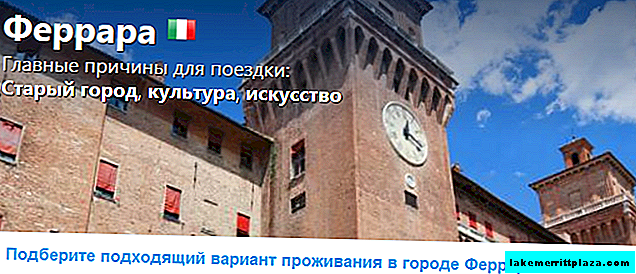
Ferrara Attractions
The greatest interest of tourists in Ferrara is riveted to the historical center of the city, where many of the sights of the Middle Ages and Renaissance remained intact.
If you don’t have much time to explore the city, besides you want to not only see, but also learn a lot of new and interesting things, it makes sense to book a sightseeing tour in advance on a convenient date. You can familiarize yourself with the offer and make a reservation here.
Cathedral of St. George
One of the most ancient buildings of the city of Ferrara is considered the Cathedral of St. George. It was built from the XII to the XIV century. The facade, originally made of pink marble in the style of Lombard romanticism, a couple of centuries later acquired Gothic elements.

Ferrara Cathedral - one of the oldest attractions of the city
The interior of the cathedral after the devastating fire of the 17th century. It was rebuilt in the then fashionable baroque style. The painting “The Last Judgment” by Filippo Lippi, dated to the 16th century, is preserved in the altar. Older paintings (from the beginning of the 15th century) are stored in the museum of the cathedral, which is opposite, in the former church of San Romano.
Palaces of the ducal d'Este
On the opposite side of the duomo in the XIII century. the first residence was erected for the dukes of Este - Municipal Palace (Palazzo Municipale). Here the ducal family lived until the sixteenth century. Later, the city hall was located in the building.

Palazzo Minicipale - the first palace of the clan d'Este in Ferrara
In the XIV century. after the suppression of the urban uprising, in order to protect himself and his family, Nikollo II d'Este decided to lay a powerful fortress near his palace Castello estense. It began to be built near the tower of Torre dei Leoni, from the XIII century. which was part of the city fortifications. After construction was completed, the Duke's army was housed in Castello Estense, and in the XV century. Fearing the conspirators, the d'Este family finally moved to the protected castle. Today, Castello Estense is considered the main attraction of the city of Ferrara. As part of the tour, you can see the interior of the palace, how the family of the ruling dynasty lived, the servant, where the office premises and the prison were located.

The impressive castle of Estense retained the spirit of the Middle Ages
By the end of the XIV century. during the reign of Alberto V d'Este, another ducal palace was built - Palazzo Scifanoia. The literal translation of "schivar la noia" is to dispel boredom. It is not difficult to guess that the palace was built, first of all, to entertain the hosts. With Borso d'Este, very keen on astrology, the palace acquired a richly painted hall of the Months. The walls around the perimeter of the hall are decorated with an annual cycle of zodiac signs, skillfully diluted with allegorical scenes from everyday life.

In the Palazzo Skifanoia, the Hall of the Months is of most interest.
House of Romea - Another interesting attraction of Ferrara. This house was built by the merchant and landowner Giovanni Romei in the middle of the XV century. after his marriage to Polissen d'Este. In the XVI century. Cardinal Ippolito II d'Este chose this place, redoing it a bit in his own manner. Outwardly unremarkable, the house has a small, but rather elegant courtyard. Inside, several ceiling paintings of the 16th century have been preserved. Now in Casa Romei is a museum of painting and sculpture.

Behind the impregnable walls of the house of Romei, an elegant courtyard is hidden
Another palazzo belonged to the daughter of Francesco d'Este Marfiza. It was built in the eastern part of the city in the XVI century. Only a few ceiling paintings inside, as well as a marvelous garden with decorations for theatrical productions, have survived from the first owners to our days. AT Palazzo Marfiza d'Este currently houses a museum of furniture and antiques of the XVI-XVII centuries.

Under Marfiz d'Este, a cozy garden was laid out in the palazzo
Costabili Palace (Palazzo Costabili) was built in the southeastern part of the city for the ambassador Ludovico Sforza Antonio Costabili. There is a version that the palazzo was built by order of Sforza himself to accommodate his wife Beatrice d'Este in the homeland. Behind the harsh brick walls of the exterior, a richly decorated gallery courtyard hid several palazzo buildings joined together. The interior decoration is practically not preserved. Now the palace houses the National Archaeological Museum.

The elegant Palazzo Costabili, according to one version, was built on the orders of the Duke of Sforza of Milan
Ferrara - the "perfect city"
Under the rule of Este, medieval Ferrara grew and no longer fit within the historical center. The first expansion of the city was undertaken under Nicollo II d'Este in the fourteenth century. In memory of this event, the aforementioned house of Romea and the Palazzo Renata of France, which now houses one of the buildings of the University of Ferrara, are preserved.
With the advent of the XV century. to power Ercole I d'Este Ferrara experienced a second expansion.
The city’s territory has almost doubled - from the Po River to the now existing axis of corso Porta Po, corso Biagio Rossetti and corso Porta Mare. This part of the city was first cut by a rectangular grid of streets, decorated with gardens and parks. Ercole d'Este sought to create a "perfect city" with a clear layout. Ferrara was the first in Europe where it was possible to implement the plan, which was awarded the inclusion in the UNESCO World Heritage List.

Ercole Avenue, according to UNESCO experts, recognized as the most beautiful street of Ferrara
In the so-called "extension of Ercole", unlike the medieval center of Ferrara, many sights of the Renaissance are preserved.
Most of them are located on the most beautiful street of the city. corso Ercole I d'Este. The street is literally created for walking. The most noticeable part of it is the so-called "Crossroads of Angels", where several palazzos were erected at once:
- The Diamond Palace, so named due to the unusual decoration of the walls;
- The austere and ascetic palace of Turca di Bagno;
- and the marble palace of Prosperi Sakrati.

Unusual decoration of the facade of the Diamond Palace literally "plays" in the sun
If you continue driving along the intersection of Angels along Ercole Avenue, you can go to the picturesque garden near another attraction of Ferrara - city walls. In general, walls can be found on all sides of the city. Initially, they surrounded only the historical center, after the "expansion of Ercole" they also covered new city quarters. The walls were erected in the XVI century. according to all then existing rules of fortification. Later, they were repeatedly rebuilt and strengthened. Three entrances led inside the walls: the gates of the Angels from the north, the gates of Paola from the south and the gates of San Giovanni from the east.

Around the city was built a powerful complex of fortifications
Inside the city under Ercole d'Este, a tradition was born of breaking shady gardens and parks. One of the first to be planted with vegetation was Piazza Ariostea, which since the Middle Ages has served as the venue for the traditional Palio.
Palio Ferrara
Speaking about the sights of Ferrara, it is also worth mentioning the annual event, which attracts thousands of tourists in the city - the traditional horse racing of Palio, not inferior in entertainment to the famous Palio of Siena.
The tradition of celebrating the Palio in Ferrara originated in 1279 in honor of the victory of the Azzo VII Novello in the battle of Cassano d'Adda. Competitions were held in four different categories (for girls, boys, horses and donkeys) twice a year. Now the categories have remained the same, but the event takes place only 1 time per year - on the last Sunday of May.
Palio traditionally marks the end of annual festivities. All May, starting with the Feast of the Blessing, the townspeople recall the glorious history of the city. Concerts, celebrations, colorful carnival processions, performances of magicians, squires, ancient games are organized.
Other interesting articles:
- Bologna: how to get, where to stay and what to see
- Ravenna: attractions of the capital of mosaics
- Attractions Modena
- Milano Marittima: how to get and what to do
- What to see in Venice on your own in 1 day

